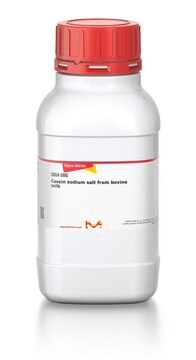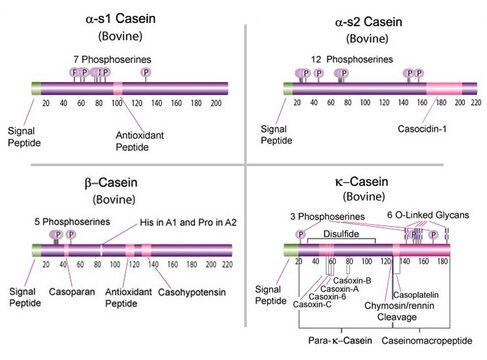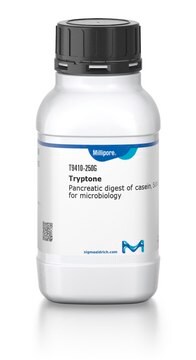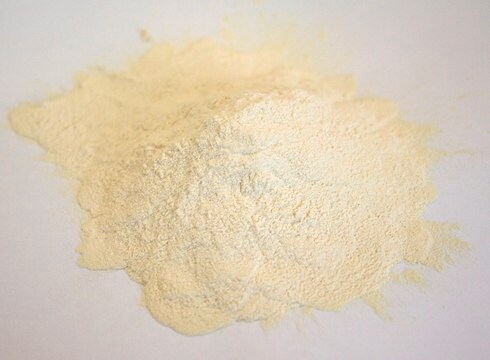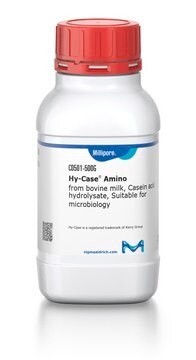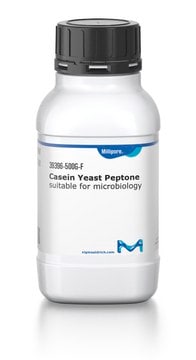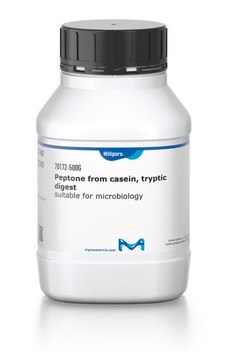22090
Casein Hydrolysate
suitable for microbiology, Nitrogen source in culture media
Synonym(s):
Peptone from casein, Pancreatic hydrolysate of casein, peptone from casein
Sign Into View Organizational & Contract Pricing
All Photos(4)
About This Item
Recommended Products
biological source
bovine milk
Quality Level
form
powder
composition
total nitrogen (N), ≥11%
storage condition
(sealed container)
impurities
≤3.5% chloride (expressed as NaCl)
ign. residue
≤8%
loss
≤6.0% loss on drying
pH
6.0-7.0 (25 °C)
solubility
H2O: 2%, clear, faintly yellow to brown
application(s)
food and beverages
microbiology
storage temp.
10-30°C
Looking for similar products? Visit Product Comparison Guide
Related Categories
General description
Pancreatic hydrolysate of casein is manufactured by controlled enzyme hydrolysis of milk protein. It can act as a nutrient supplement in culture media because it is rich in certain types of amino acids and hence serves as an efficient nitrogen source. It also enables the production of antibiotics, toxins, bacteriocins, enzymes, etc.
Application
Casein hydrolysate has various applications, in sterility testing media or biochemical characterization as it is utilized by a wide variety of microorganisms.It can also be used in the production of certain antibiotics, toxins, bacteriocins, and enzymes.
Other Notes
Sales restrictions may apply
Storage Class Code
11 - Combustible Solids
WGK
WGK 3
Flash Point(F)
Not applicable
Flash Point(C)
Not applicable
Personal Protective Equipment
dust mask type N95 (US), Eyeshields, Gloves
Choose from one of the most recent versions:
Already Own This Product?
Find documentation for the products that you have recently purchased in the Document Library.
Customers Also Viewed
Kacy Greenhalgh et al.
Cell reports, 27(5), 1621-1632 (2019-05-03)
By modulating the human gut microbiome, prebiotics and probiotics (combinations of which are called synbiotics) may be used to treat diseases such as colorectal cancer (CRC). Methodological limitations have prevented determining the potential combinatorial mechanisms of action of such regimens. We expanded
Losee L Ling et al.
Nature, 517(7535), 455-459 (2015-01-07)
Antibiotic resistance is spreading faster than the introduction of new compounds into clinical practice, causing a public health crisis. Most antibiotics were produced by screening soil microorganisms, but this limited resource of cultivable bacteria was overmined by the 1960s. Synthetic
Our team of scientists has experience in all areas of research including Life Science, Material Science, Chemical Synthesis, Chromatography, Analytical and many others.
Contact Technical Service


